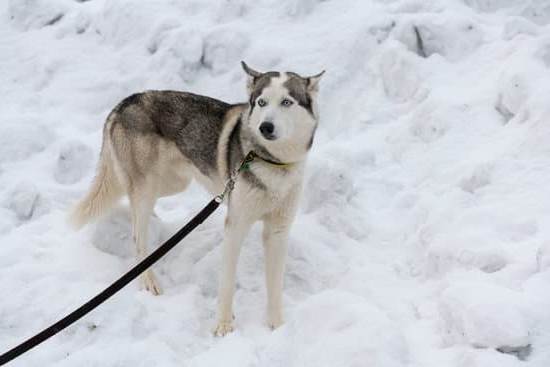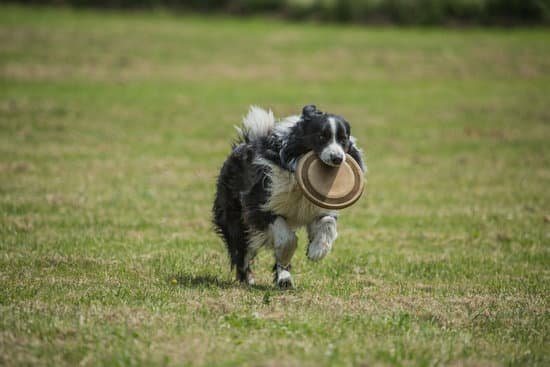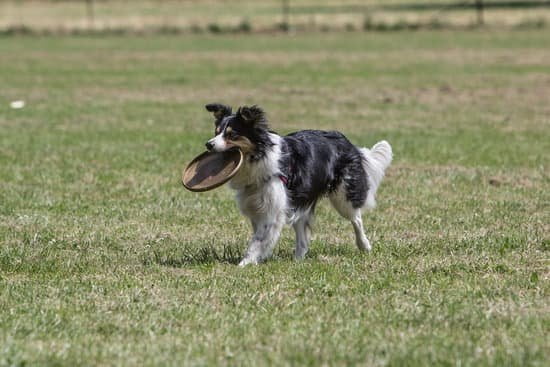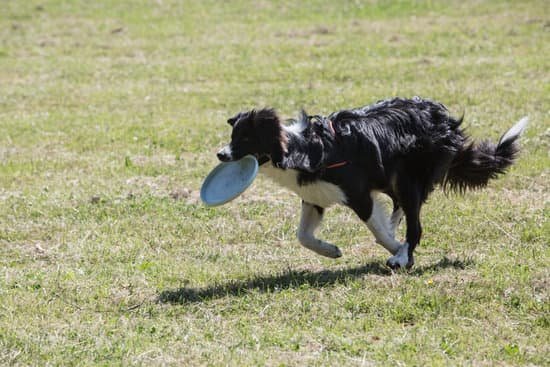Have you ever found yourself in a situation where you wished your dog would refuse that tempting treat from a stranger’s hand? Training your dog to refuse food from strangers is not only a matter of manners, but also a crucial aspect of their safety and well-being. In this article, we will explore the importance of training your dog to refuse food from strangers and provide you with practical steps to achieve this goal.
Dogs are naturally curious creatures, and their instinct to accept food offered by others can put them at risk. Whether it’s an unknown person with good intentions or someone who may be offering something harmful, teaching your dog to decline food from strangers can prevent potential threats. Not only does this training help ensure their overall safety, but it also establishes boundaries and reinforces your role as their leader.
Before delving into the training techniques, it is essential to assess your dog’s current behavior around food and strangers. By understanding their attitudes and responses in these situations, you can tailor the training process to address specific challenges effectively. This evaluation phase sets the foundation for building trust with your dog and establishing open lines of communication that will aid in their successful refusal of food from strangers.
Without proper training, dogs may excessively beg for scraps or snatch unattended food when given an opportunity. Building a strong foundation through basic commands and establishing trust is crucial in preventing such behaviors. Teaching your dog obedience commands like “sit,” “stay,” and “come” helps them understand boundaries while instilling confidence in their decision-making abilities.
This step-by-step approach lays the groundwork for introducing the vital command: “leave it.” Through controlled exposure and positive reinforcement techniques, you will gradually teach your dog to refuse food offered by strangers.
In the upcoming sections, we will guide you through each phase of training towards achieving success in each step outlined above. By consistently implementing boundaries, reinforcing desirable behavior, managing unexpected situations, troubleshooting common challenges, and maintaining a consistent routine, you will not only celebrate your dog’s training success but also ensure their continued progress and safety.
So let’s delve into the world of training your dog to refuse food from strangers and equip you with the tools you need to keep them safe and well-behaved.
Assess Your Dog’s Current Behavior
Assessing your dog’s current behavior is an important step in training them to refuse food from strangers. It allows you to understand your dog’s attitude towards food and strangers, which will help you tailor your training approach to their specific needs. Here are some key aspects to consider when evaluating your dog’s behavior:
Food Motivation
Firstly, assess your dog’s level of food motivation. Does your dog generally display a strong desire for food? Are they easily distracted by the smell or sight of food? Understanding how much your dog values food will give you insight into the level of difficulty in training them to refuse it from strangers.
Temperament with Strangers
Observe how your dog behaves around strangers. Do they approach them eagerly or exhibit signs of fear or aggression? An understanding of their temperament will determine whether there are any underlying behavioral issues that need to be addressed before moving forward with the training process.
Responses to Commands
Evaluate your dog’s responsiveness to basic commands such as “sit,” “stay,” and “come.” This will indicate their overall obedience and readiness for more advanced training, including learning the “leave it” command specifically used for refusing food from strangers.
By carefully assessing these elements, you can gain valuable insights into your dog’s current behavior. This information will serve as a foundation for developing a personalized training plan that effectively addresses their individual needs and helps in preparing them to refuse food from strangers successfully.
In the next section, we will explore how building a strong foundation through teaching basic commands and establishing trust with your dog is crucial in the training process.
Building a Strong Foundation
In order to train your dog to refuse food from strangers, it is important to establish a strong foundation by teaching basic commands and building trust. These initial steps will help set the stage for successful training and ensure that your dog understands your expectations.
One crucial command to teach your dog is the “sit” command. This basic command not only establishes obedience, but also allows you to have control in various situations, including when someone tries to offer your dog food. Start by holding a treat close to your dog’s nose, then raise it slowly while saying “sit.”
As their head follows the treat, their bottom should naturally lower into a sitting position. Once they are sitting, reward them with the treat and praise. Practice this command consistently until they can perform it reliably.
Another essential command is “come,” which ensures that your dog will come back to you on command. This is particularly important if they are being approached by a stranger offering food that you want them to refuse. Begin in an enclosed area with minimal distractions. Say your dog’s name followed by “come” in a firm but positive tone.
As they start moving towards you, encourage them with gestures or gentle tugs on their leash if necessary. When they reach you, reward them with treats and praise. Gradually increase the difficulty by practicing in different environments with more distractions.
Alongside teaching basic commands, it is crucial to establish trust between you and your dog. Trust plays a significant role in ensuring that they understand and follow your commands effectively. Building trust involves regular bonding activities such as grooming sessions, playtime, and daily routines that create a sense of predictability for your furry friend.
By teaching basic commands like sit and come, as well as building trust through consistent bonding activities, you are laying the foundation for successful training in refusing food from strangers. These steps will help strengthen the communication and connection between you and your dog, making it easier for them to understand your expectations and respond appropriately. Remember to be patient, use positive reinforcement, and always make training sessions enjoyable for your pup.
Introducing the “Leave It” Command
When it comes to training your dog to refuse food from strangers, one of the most valuable commands you can teach them is “leave it.” This command not only helps keep your dog safe from potentially harmful food items, but it also establishes a clear boundary regarding what they can and cannot consume. Here is a step-by-step guide on how to introduce and train your dog to obey the “leave it” command:
- Start with basic obedience: Before introducing the “leave it” command, it’s important to ensure that your dog has a solid foundation in basic obedience commands such as sit, stay, and come. These commands will serve as building blocks for teaching them the more advanced “leave it” command.
- Use positive reinforcement: Positive reinforcement is key when training your dog. Begin by holding a treat in your closed hand and presenting it to them. As they sniff or paw at your hand, firmly say “leave it” and wait for them to stop their behavior. The moment they back away or lose interest in the treat, praise them enthusiastically and give them a different reward such as their favorite toy or a different treat.
- Gradually increase difficulty: Once your dog understands the concept of leaving treats alone when instructed, you can gradually increase the difficulty level by using higher-value treats or introducing distractions such as other people offering food. Start by asking a friend or family member to slowly extend their hand with a treat towards your dog while saying “leave it.” Practice this scenario repeatedly until your dog reliably refuses food from strangers.
To further reinforce the “leave it” command, you can also incorporate controlled exposure exercises where you simulate real-life situations – like going for walks at popular parks or sitting at outdoor cafes – where people may attempt to offer food to your pup. Over time and with consistency, your dog will internalize the command and understand that they should refuse food from anyone other than you.
Training your dog to refuse food offered by strangers not only protects their health and wellbeing but also promotes their obedience and safety. By patiently following these steps and maintaining a positive training environment, you can successfully teach your furry friend this important skill while strengthening the bond between you both.
Socialization and Controlled Exposure
Socialization plays a crucial role in training your dog to refuse food from strangers. By gradually exposing your dog to different people and food situations, you can help them become more comfortable and confident in distinguishing between safe and unsafe food sources. This section will outline some effective strategies for socializing your dog and gradually exposing them to various scenarios.
One key aspect of socialization is introducing your dog to different types of individuals. Start by inviting friends or family members over who are familiar with dogs and can follow instructions. Begin with calm interactions, such as sitting together in a controlled environment. As your dog becomes more at ease, progress to having individuals approach with treats but not offering them to the dog directly.
Additionally, it’s important to expose your dog to different food situations that mimic real-life scenarios. Take your dog on walks through parks or outdoor markets where they can observe people eating or offering food. Start at a distance and gradually decrease the distance as your dog becomes more at ease.
Table:
| Strategy | Description |
|---|---|
| Introduce familiar individuals | Start with friends or family members who are comfortable around dogs and can follow instructions. Progress from calm interactions to controlled offer of treats. |
| Expose your dog to different environments | Take your dog for walks in public areas like parks or outdoor markets where they can observe people eating or offering food from a distance. |
| Attend obedience classes or training sessions | Enroll your dog in obedience classes where they can interact with other dogs and follow instructions from a professional trainer to enhance their socialization skills. |
Attending obedience classes or training sessions can also be beneficial for socializing your dog. In these controlled environments, your dog will have the opportunity to interact with other dogs and follow instructions from a professional trainer. This helps them develop their social skills further and become accustomed to behaving appropriately around both dogs and people.
Remember, socialization should be done gradually and at your dog’s pace. Rushing the process can result in fear or anxiety, which may hinder progress. Always provide positive reinforcement and rewards when your dog exhibits desired behavior during socialization exercises. With time, patience, and consistency, your dog will become more confident in refusing food from strangers while maintaining a friendly disposition towards those they know and trust.
Reinforcement and Rewards
Reinforcing positive behavior is essential when training your dog to refuse food from strangers. Using positive reinforcement techniques, such as rewards and praise, can help to encourage and reinforce the desired behavior of your dog. This section will provide guidance on how to effectively utilize positive reinforcement techniques in order to encourage your dog’s refusal of food offered by strangers.
One effective method of positive reinforcement is using treats. When training your dog to refuse food from strangers, it is important to have a high-value treat that your dog finds particularly enticing.
By using this treat as a reward for successful refusal, you can motivate and incentivize your dog to continue displaying the desired behavior. It is crucial to reward your dog immediately after they refuse the food from a stranger, so they understand the connection between their action and the reward.
In addition to treats, verbal praise and physical affection are also effective forms of positive reinforcement. Whenever your dog successfully refuses food from a stranger, be sure to offer enthusiastic praise and petting. Dogs thrive on positive attention from their owners, so by showering them with affection when they behave appropriately, you are reinforcing their good behavior and strengthening the bond between you and your canine companion.
| Positive Reinforcement Techniques | Description |
|---|---|
| Treats | Use high-value treats that your dog finds enticing as rewards for successful refusal. |
| Verbal Praise | Offer enthusiastic verbal praise whenever your dog successfully refuses food. |
| Physical Affection | Gently pet, cuddle or give belly rubs as a form of reward for desired behavior. |
Remember, consistency is key when implementing positive reinforcement techniques. Always reward your dog for refusing food from strangers to reinforce their understanding that this behavior is desirable. However, it is important to wean off the dependence on rewards over time and gradually introduce intermittent reinforcement to maintain the learned behavior. By consistently utilizing positive reinforcement techniques, you can encourage and reinforce your dog’s ability to refuse food from strangers, keeping them safe from potentially harmful or inappropriate treats.
Implementing Boundaries
Implementing boundaries is a crucial step in training your dog to refuse food from strangers. By establishing clear rules and consistency, you can effectively prevent unwanted food consumption and reinforce the desired behavior. Here are some strategies to help you create boundaries for your dog:
Establishing Ground Rules
Begin by setting expectations for your dog’s behavior when it comes to accepting food from strangers. Clearly communicate that they are only allowed to eat food that you provide or approve. Consistency is key in reinforcing these rules, so make sure all household members and visitors understand and adhere to them.
Use Positive Reinforcement
Positive reinforcement techniques can be highly effective in teaching dogs what behaviors are desirable. Whenever your dog refuses food offered by strangers, reward them with praise, treats, or other rewards they enjoy. This will help associate the refusal with positive outcomes, making them more likely to repeat the behavior in the future.
Create Distraction Techniques
Teach your dog alternative behaviors they can engage in when approached by strangers with food. For example, you might train them to sit or lie down on command when someone approaches with a treat. This redirection of their focus can help prevent unwanted consumption while still allowing them to interact politely with others.
Set Limitations during Training
While training your dog to refuse food from strangers, it’s important to set appropriate limitations for their exposure to such situations. Avoid placing unrealistic expectations on your furry companion early on, as this may overwhelm or confuse them. Gradually increase the difficulty level of the training exercises over time as they become more comfortable and proficient.
By implementing clear boundaries and consistent rules, you can significantly reduce the chances of your dog consuming unwanted food from strangers. Remember that every interaction is an opportunity for training and reinforcement, so be patient and persistent throughout the process. With time and practice, your dog will become better equipped to refuse food offered by strangers, ensuring their safety and well-being in various environments.
Managing Unexpected Situations
Dealing with Insistent Strangers
Despite your best efforts, there may be situations where strangers are insistent on offering your dog food, even after you’ve made it clear that they should not. In these cases, it’s important to remain calm and assertive in order to protect your dog and reinforce the training.
Firstly, it’s crucial to communicate clearly with the stranger. Politely but firmly explain that you are training your dog not to accept food from strangers and ask them to respect your wishes. It may help to emphasize that accepting food from strangers can have negative consequences for your dog’s health.
If the person continues to insist or becomes aggressive, it can be helpful to have a command or cue word specifically for these situations. For example, saying “No, thank you” firmly and walking away with your dog can signal to both the stranger and your dog that the interaction is over.
Avoiding Potential Food Hazards
In addition to dealing with insistent strangers, it’s important to be aware of potential food hazards that may be offered to your dog. Some foods that humans enjoy can be toxic or harmful for dogs, so it’s essential to prevent them from consuming anything questionable.
Educate yourself about common foods that are dangerous for dogs such as chocolate, onions, grapes/raisins, and certain artificial sweeteners like xylitol. Be vigilant when out in public spaces where people might offer these types of foods unknowingly.
Consider equipping your dog with a “Do Not Feed” tag on their collar or harness. This can serve as a visual reminder for others not to offer any treats or food without permission.
In case of accidental consumption of potentially harmful foods or if you suspect any negative reaction after an encounter with a stranger who offered something suspicious, make sure you have the contact details of an emergency veterinarian readily available. Being prepared will enable you to act quickly in protecting your dog’s health.
Remember, prevention is key. By being proactive in managing unexpected situations and potential food hazards, you can ensure that your dog stays safe and healthy.
Handling interactions with insistent strangers and preventing potential food hazards are important aspects of training your dog to refuse food from strangers. By remaining calm, assertive, and vigilant, you can effectively protect your dog from any unwanted ingestion of harmful or toxic substances. Remember to reinforce the training through consistent practice and positive reinforcement techniques. Celebrate your dog’s progress and always prioritize their safety when it comes to interactions with strangers and potential food dangers.
Troubleshooting Common Challenges
Training your dog to refuse food from strangers can sometimes come with its own set of challenges. As you progress through the training process, you may encounter some common issues that require troubleshooting and adjustments to your techniques. It’s important to remember that each dog is unique and may respond differently to training methods, so it may take some trial and error to find what works best for your furry friend.
One common challenge you might face is resistance or hesitation from your dog when it comes to refusing food offered by strangers. Some dogs are naturally more food-motivated than others, making it difficult for them to ignore tasty treats. In these cases, you may need to work on strengthening the “leave it” command even further. Consider practicing the command in various scenarios and gradually increasing the level of distraction by incorporating different types of food or even toys.
Another common issue is when your dog starts exhibiting signs of anxiety or fear around strangers. This can make it harder for them to focus on the training and refuse food confidently. If this happens, take a step back and reassess the situation. Spend more time focusing on building trust with your dog through positive reinforcement techniques and socialization exercises. Gradually introduce them to new people in a controlled manner, ensuring their comfort and confidence throughout the process.
It’s also important to address any unintentional reinforcement of undesirable behavior that may occur during training. Sometimes well-meaning family members or friends might inadvertently reward your dog for accepting food from strangers, undermining their progress. Communicate clearly with those around you about the importance of consistency in training and ask for their support in following the established rules.
By troubleshooting common challenges effectively, you’ll be able to make necessary adjustments to your training techniques and overcome any obstacles that arise along the way. Remember, patience and persistence are key when it comes to training your dog to refuse food from strangers. With time and effort, your furry companion will learn how to prioritize their safety and well-being over tasty treats from unfamiliar people.
Reinforcing Long-Term Behavior
To ensure that your dog maintains their ability to refuse food from strangers, it is crucial to establish a consistent training routine. Consistency is key when it comes to reinforcing long-term behavior. By following a regular training schedule, you will help solidify your dog’s understanding of the “leave it” command and their overall obedience.
One way to maintain consistency is by incorporating short training sessions into your daily routine. Whether it be in the morning before breakfast or in the evening before dinner, setting aside dedicated time for training will help keep your dog’s skills sharp. Aim for sessions that last around 10-15 minutes each day, as longer sessions may result in boredom or loss of focus.
During these training sessions, continue practicing the “leave it” command with different distractions and levels of temptation. Gradually increase the difficulty by introducing higher-value treats or more enticing food items offered by a familiar person acting as a stranger. This will reinforce your dog’s understanding that refusing food from strangers applies to all situations and not just specific individuals.
In addition to regular training sessions, incorporate the “leave it” command into everyday situations. For example, during walks or visits to parks where there may be people picnicking or eating outside, use the command whenever necessary. By consistently applying the command in real-life scenarios, you are reinforcing its importance and encouraging your dog to always refuse food from strangers.
Remember to provide positive reinforcement and rewards for desirable behavior. Whenever your dog successfully refuses food offered by a stranger, praise them enthusiastically and offer them a reward such as their favorite treat or toy. This positive reinforcement will further motivate your dog to continue obeying the “leave it” command in various situations.
By maintaining a consistent training routine and continuing to reinforce desired behavior through positive reinforcement techniques, you can ensure that your furry friend remains vigilant in refusing food from strangers over the long term. Stay patient and persistent throughout this process, as every dog learns and progresses at their own pace. With dedication and consistency, you will celebrate your dog’s training success and keep them safe from strangers’ food.
Conclusion
In conclusion, training your dog to refuse food from strangers is a crucial step in ensuring their safety and well-being. By following the steps outlined in this article, you can establish a strong foundation of trust with your dog and teach them the necessary commands to turn down food offered by strangers.
It is important to remember that training is an ongoing process and requires consistency and patience. Reinforcement and rewards are integral in encouraging desirable behavior, so be sure to praise and reward your dog when they successfully refuse food from strangers. By creating clear boundaries and rules, you can prevent unwanted food consumption and minimize potential risks.
Furthermore, it is essential to manage unexpected situations effectively. Interactions with insistent strangers or potential food hazards may occur, but by staying calm and firm in enforcing your dog’s training, you can navigate these scenarios safely. Troubleshooting common challenges is also key – address any issues that arise during the training process and adjust your techniques as needed.
Ultimately, celebrating your dog’s training success is an achievement worth recognizing. Not only have you ensured their safety from potentially harmful or unhealthy foods offered by strangers, but you have also built a stronger bond with them through trust and positive reinforcement. By consistently maintaining their training routine, you can reinforce long-term behavior and continue to keep them safe in various social situations involving food.
Frequently Asked Questions
How do I get my dog off people’s food?
To get your dog off people’s food, it is important to establish boundaries and reinforce obedience training. Begin by teaching your dog basic commands such as “sit,” “stay,” and “leave it.” Consistency is key here, so make sure you always reward your dog for good behavior and redirect their attention when they try to snatch food from people.
Additionally, it can be helpful to practice mealtime manners by providing proper, designated meals for your furry friend and ensuring they are fed before guests arrive or during mealtime. This will help eliminate the temptation for them to go after other people’s food.
How do I train my dog to stay away from strangers?
Training your dog to stay away from strangers requires socialization and positive reinforcement techniques. Start by gradually introducing your dog to new people in controlled environments, rewarding calm and friendly behavior with treats or praise. Allow your dog to approach strangers at their own pace while keeping a close eye on their body language.
If signs of fear or aggression arise, gently redirect their attention away from the person using a command like “let’s go” or “leave it.” Gradually increase exposure to different individuals over time while ensuring each interaction remains positive and stress-free for both your dog and the stranger.
How do I train my dog to leave human food alone?
Teaching your dog to leave human food alone involves a combination of impulse control exercises and consistent training techniques. Begin by using treats or items with strong smells that resemble human food (such as cheese) and place them on a table within reach but out of bounds for your pup. Practice the command “leave it” while allowing them to see the treat but rewarding them only when they choose not to go for it.
After some repetition, begin practicing in scenarios where real human food is present but inaccessible, encouraging self-control with the same command. Gradually increase difficulty until you can trust your dog around all types of human food without supervision, reinforcing their good behavior throughout the process.

Welcome to the blog! I am a professional dog trainer and have been working with dogs for many years. In this blog, I will be discussing various topics related to dog training, including tips, tricks, and advice. I hope you find this information helpful and informative. Thanks for reading!





